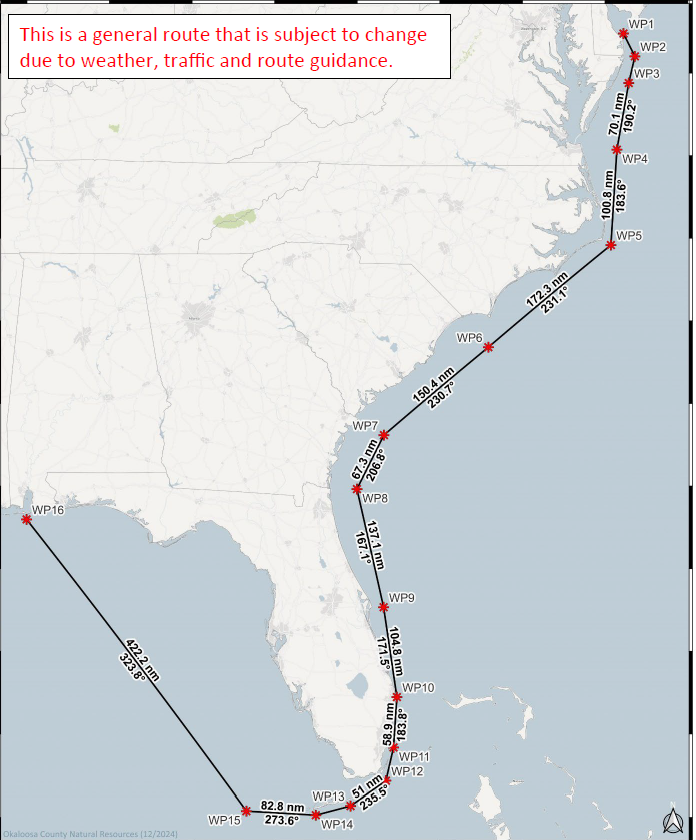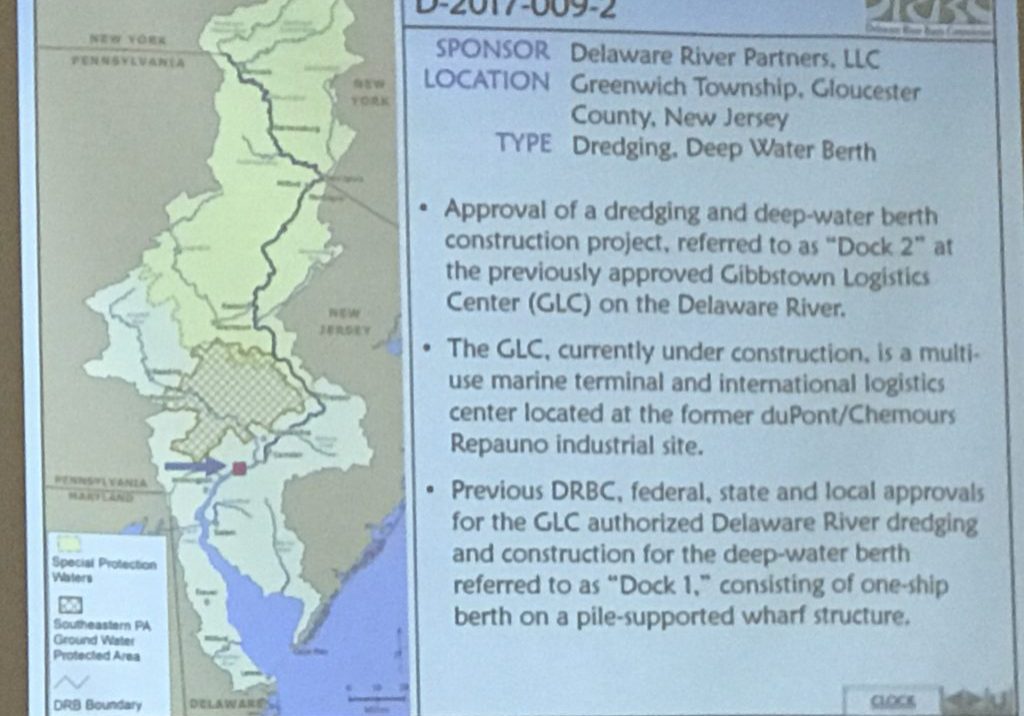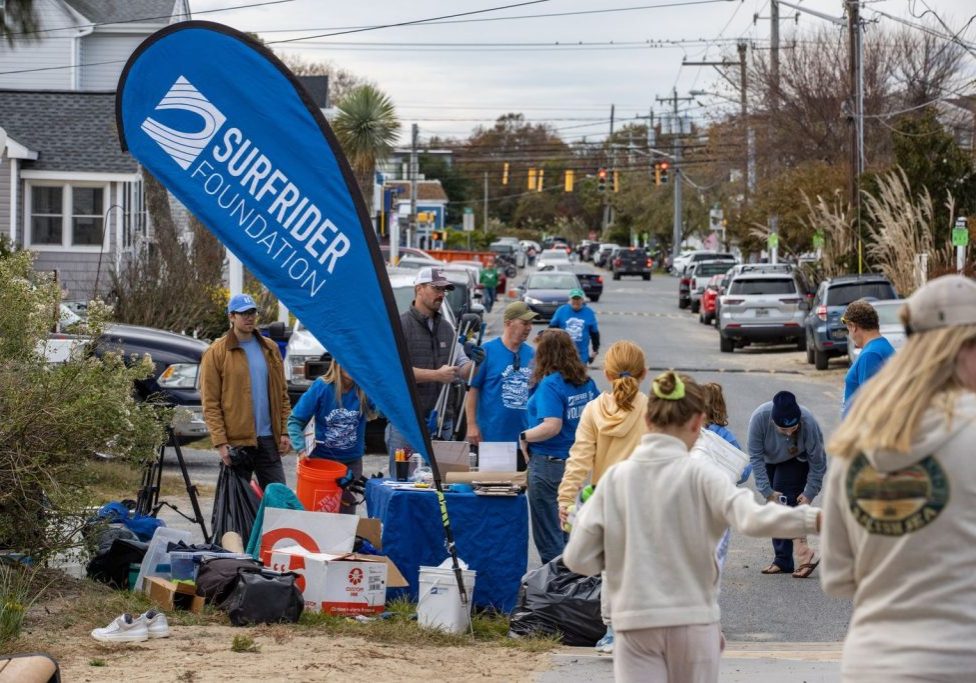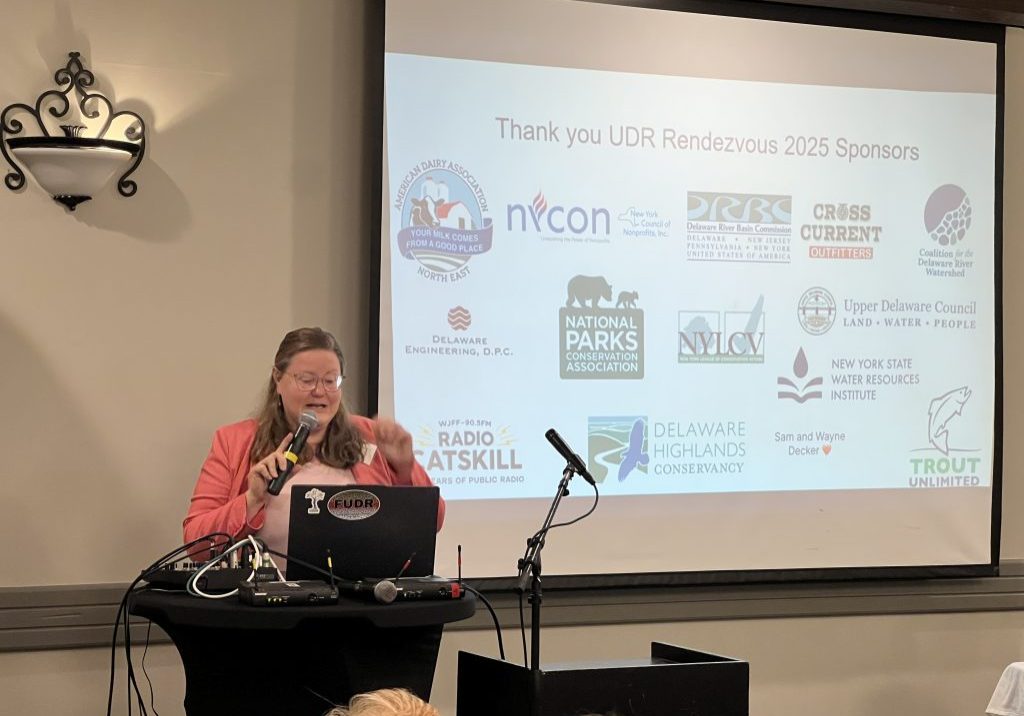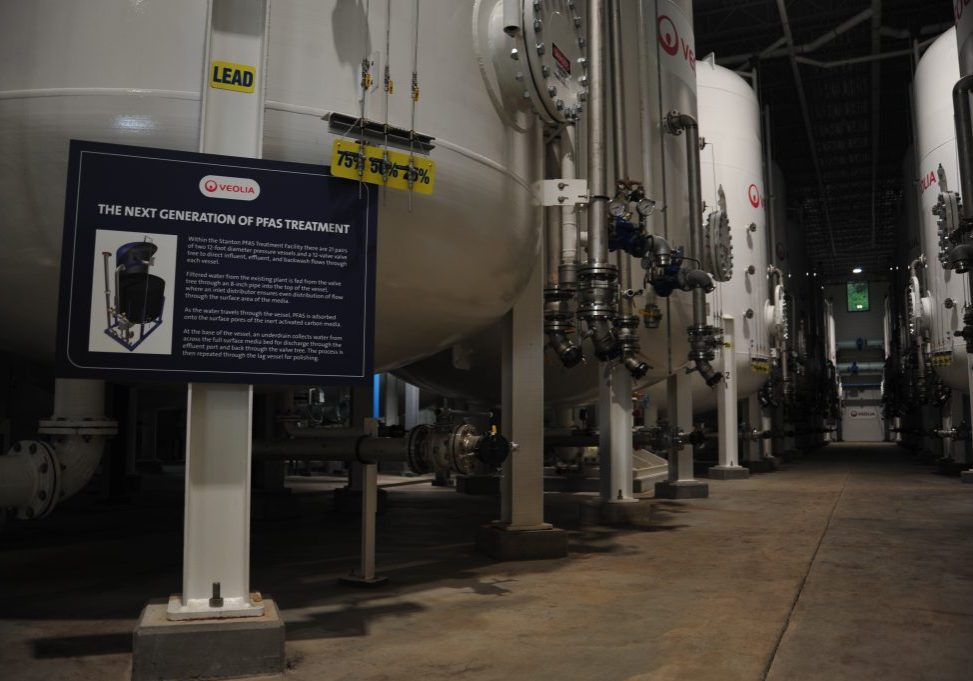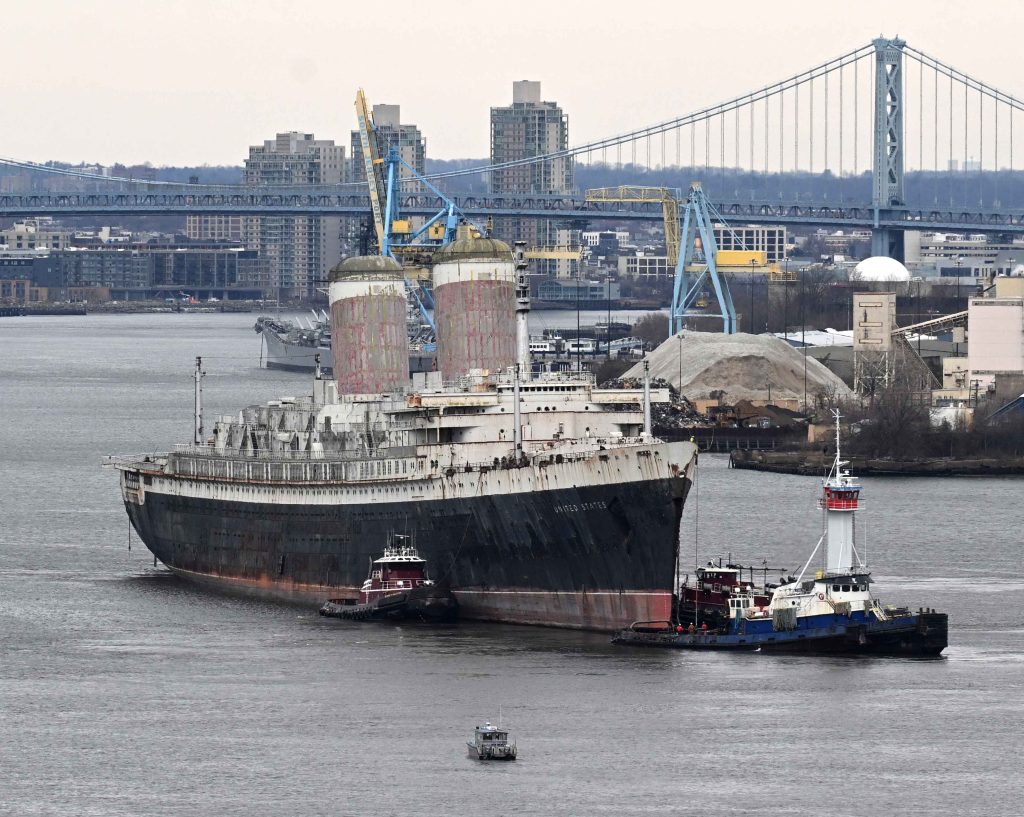
Reporter’s notebook: Behind the scenes as the SS United States departs
| February 19, 2025
The effort to move the SS United States from its longtime berth in Philadelphia to Florida has been like watching Charlie Brown trying to kick a football being held in place by Lucy.
Every time Charlie Brown takes a running start to kick the ball, Lucy pulls it away.
In four tries so far, a combination of the weather and the U.S. Coast Guard have played the role of spoilers (Lucy) to the ship’s Charlie Brown.
But maybe today is the day.
If things proceed according to plan, the nearly 1,000-foot-long vaunted cruise ship will be tugged from Philadelphia in the first leg of a two-week trip to Mobile, Ala., before eventually arriving in Florida to be sunk to become the world’s largest artificial reef.
The process of relocating the ship to Okaloosa County, Fla., which paid $1 million for the vessel, has been a mammoth undertaking. Officials have had to contend with the coordination of dozens of parties and navigate not just the waters of the Delaware River and the Atlantic, but a maze of bureaucracy as well.
As one Okaloosa County official observed in an October email: “We have submitted an excessive amount of paperwork.”
Here’s a glimpse behind the scenes of some of what’s led up to today’s planned departure. The material is drawn from nearly 2,500 pages of emails released by Okaloosa County in response to a public records request made by Delaware Currents.
A note of optimism
A Jan. 8 email from Alex Fogg, Okaloosa County’s natural resources chief, was upbeat and hopeful that, after an unexpected monkey wrench thrown into the works in November by the Coast Guard, that things would now be smooth sailing.
We had our meeting with the USCG this morning. It went well. They are satisfied with the stability and structural analysis and had no additional comments. They were also generally satisfied with the tow plan although there will be significant coordination with the USCG when the exact date is set to ensure all of their port contacts are up to speed. Lastly, we are doing some assist tug shuffling but that should be completed soon. So, all in all, we are on track. This information is not to be broadcasted or shared externally.
As it turned out, a planned departure earlier this month was scuttled after the Coast Guard sought more follow-up details.
Read more behind-the-scenes details: ‘Obstructionist’: Tensions flare over U.S. Coast Guard’s handling of SS United States
Getting around sediment obstacle
County records reveal concerns that sediment had accumulated so much behind the SS United States that it might prevent it from making it out of its slip if it were to be towed straight out into the Delaware River.
A Jan. 27 email from Fogg outlines the reasons for moving the ship from Pier 82 to 80, a relocation that was successfully completed on Friday, Feb. 14.
Everything is moving along. After conversations with tugs and pilots, the SSUS will be shifted from Pier 82 to Pier 80. This is needed to ensure the vessel can be removed from the pier and not contact sediment that may impact its removal from Pier 82. This was the alternative to waiting months for a permit to dredge. Once the vessel has been relocated and secured to Pier 80, a final bathymetry evaluation will be completed to ensure there are no new sediment issues (there won’t be).
Concerns about collectibles going missing
Susan L. Gibbs, the president of the SS United States Conservancy, wrote to Fogg, expressing relief that shipboard access for preservation purposes would be possible once the ship reached Mobile.
“I can assure you that the Conservancy is as eager as you are to avoid seeing items from the ship floating around on E-bay or Facebook Marketplace,” she wrote. “That would not be a good look for any of us.”
She added that the conservancy was in the early stages of thinking about the contents of a future museum in Florida.
“We agree that displays that look like a warehouse of disembodied ship fixtures won’t be particularly compelling,” she wrote. “We are erring on the side of saving more valves and small components than will be potentially displayed in the museum since any ‘extras’ could potentially be leveraged as museum donor perks.”
Fogg replied to Gibbs:
I don’t have the capacity to verify the list or cross-reference with what was on board when we took ownership and what’s on board now. This is where there is a significant amount of trust being put on your team to ensure nothing (big or small) is retained for a personal collection, ends up on eBay or other platform that would cause a problem. Optics are always a major concern of ours. I love the preservation photos and work being proposed to preserve a bunch of items. I do wonder how many valves and plaques are needed though? Is the plan to display 100+ valves and plaques/signs at the museum?
‘My drone fell onto the USS ship because of a seagull’
In a Jan 25 email, Patrick Shively of Allentown, Pa., said he was taking drone pictures of the SS United States when a flock of a seagulls flew at his drone and knocked it onto the deck of the ship.
“It landed upside down so I was unable to fly it off and am hoping there’s a way to get it back if possible,” he wrote. “I was following all of the FAA guidelines and had authorization to fly the drone via an approved flight record.”
He attached a photo of where it fell on the ship, adding, “I’d very much appreciate any help getting it back as it was a very expensive item for my photography passion.”
In response to a query by Delaware Currents, Shively said that someone replied that they had looked but didn’t find the drone.
“It’s been three weeks with rain, snow and high winds as well as below freezing temps so even if it was recovered, not sure it would still work,” he said in an email.
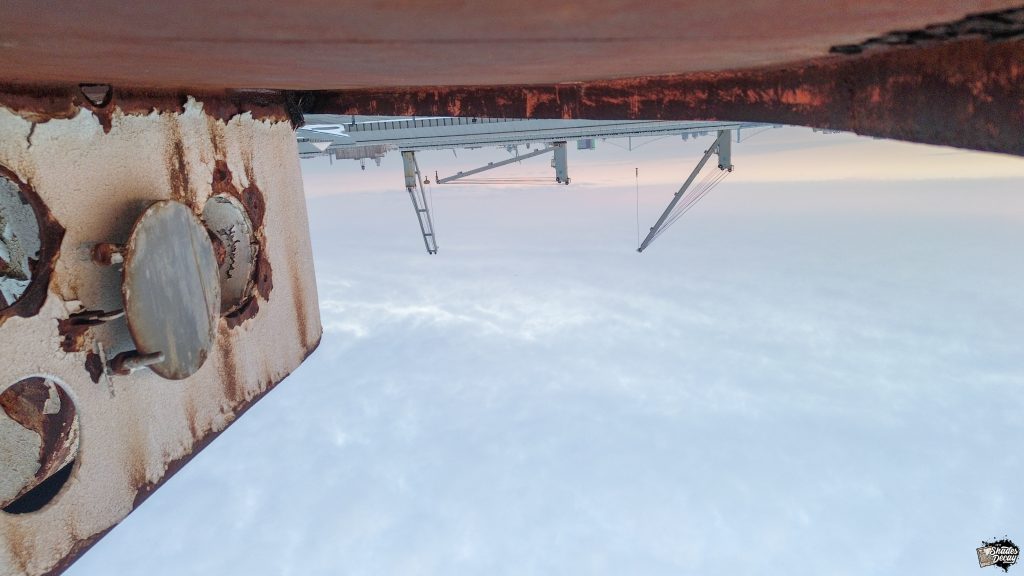
Prep work abounds
Among the numerous details county officials had to see to was testing for PCBs. According to county emails, no regulated levels of PCBs were found.
Workers also had to scrape loose green floor covering from the top decks and store them in some 600 bags, which will eventually be properly disposed of when the ship reaches Mobile.
After a Jan. 22 visit, the Coast Guard “noted numerous hatches and doors were open or not watertight, several broken portlights, significant water in the bilge, and ice accumulation on various decks.”
“Once these discrepancies are resolved, we plan to re-attend the vessel to verify readiness for the dead ship tow,” wrote Lt. Cmdr. Patrick Frain, the chief of the Inspections Division at the Coast Guard’s Sector Delaware Bay.
Summing it up
In a Jan. 21 email, Fogg responded to congratulations that were extended for making the project happen: “Yea, it’s going to be a great reef,” Fogg wrote, “but man, it’s been one of the biggest headaches I’ve ever had to deal with.”
